Watch – Mexico City is Converting Highway Pillars Into Vertical Gardens to Clean the Air and Beautify the City
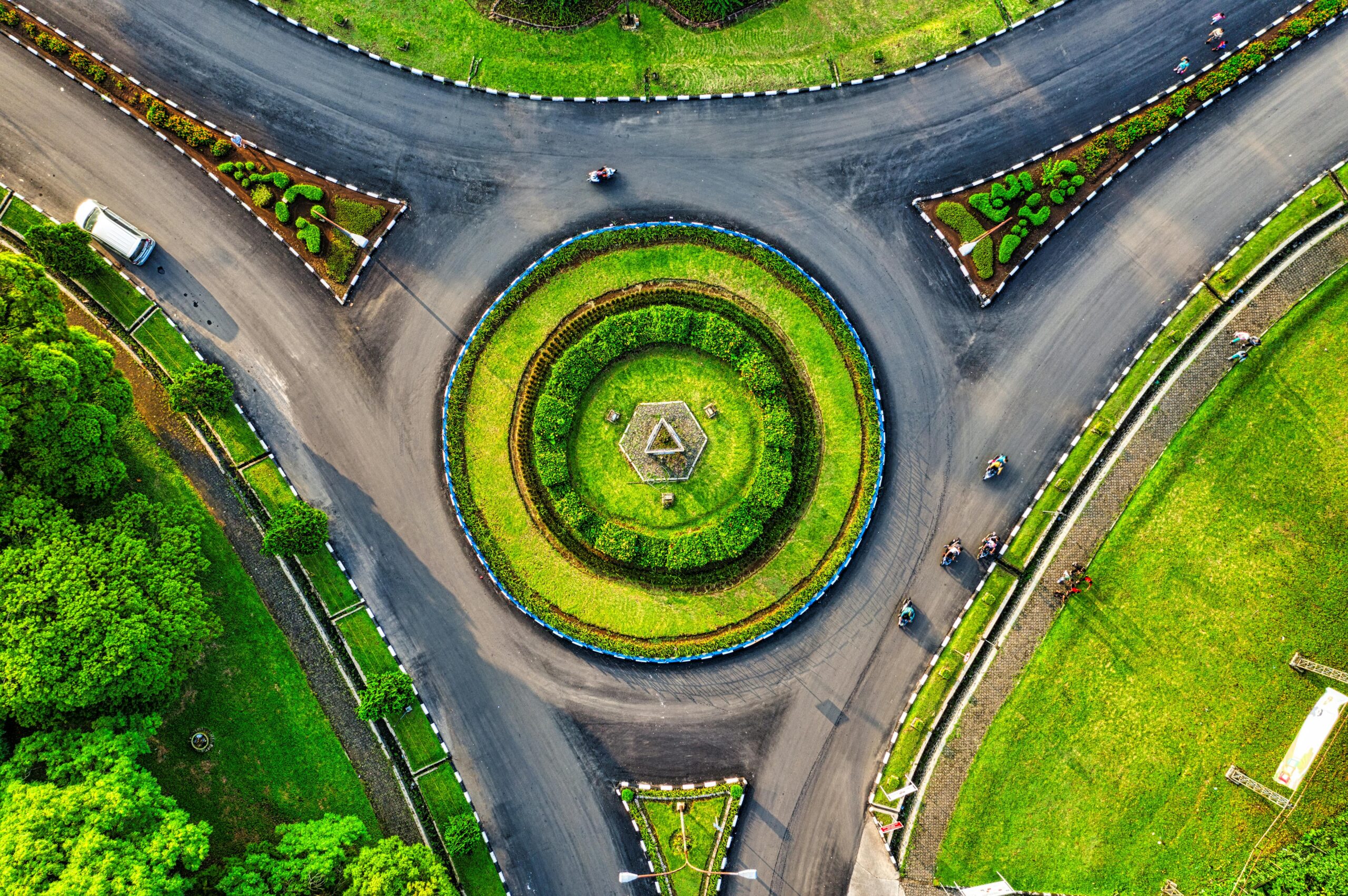
Every city tells a story not just in its skyline or streets, but in its silence. In Mexico City, that silence used to hang heavy with smog. Once labeled the most polluted city in the world by the United Nations, its air claimed more lives each year than organized crime. For millions stuck in gridlocked traffic, surrounded by concrete and chaos, daily life became a battle for breath.
But now, along the Periférico highway, something unexpected is taking root literally. Towering grey pillars, once lifeless supports for the city’s endless flow of cars, are being transformed into vertical gardens. Cascading vines and lush greenery stretch skyward from steel, softening the harsh edges of urban life.
Is this the beginning of a greener future or just a well-dressed distraction from deeper problems? Can plants on pillars truly clean the lungs of a city choked by exhaust? Or is the beauty blooming above the traffic a powerful symbol of what’s possible when citizens refuse to accept the status quo?
What’s happening in Mexico City isn’t just a landscaping project it’s a shift in perspective. It’s a challenge to the notion that progress must bulldoze the past. Instead, it asks: what if we reclaimed the structures we already have? What if even the pillars of pollution could become symbols of renewal?
How Via Verde Was Born
In 2016, architect Fernando Ortiz Monasterio looked at the towering concrete columns of Mexico City’s Periférico highway and saw something different not just structural supports for a congested expressway, but blank canvases for change. What most people had long accepted as immovable eyesores, Monasterio reimagined as vertical gardens living walls that could soften the city’s harshest spaces and breathe some life back into the grey.
To test the idea, he did something simple but powerful: he asked. Through a viral social media campaign and a one-minute video shared by actor Luis Gerardo Méndez, Monasterio invited the public to weigh in. The response was overwhelming. Within three days, over 80,000 people signed a Change.org petition demanding the city approve the project. Thousands more emailed the mayor’s office. It was not just support it was a collective call to act.
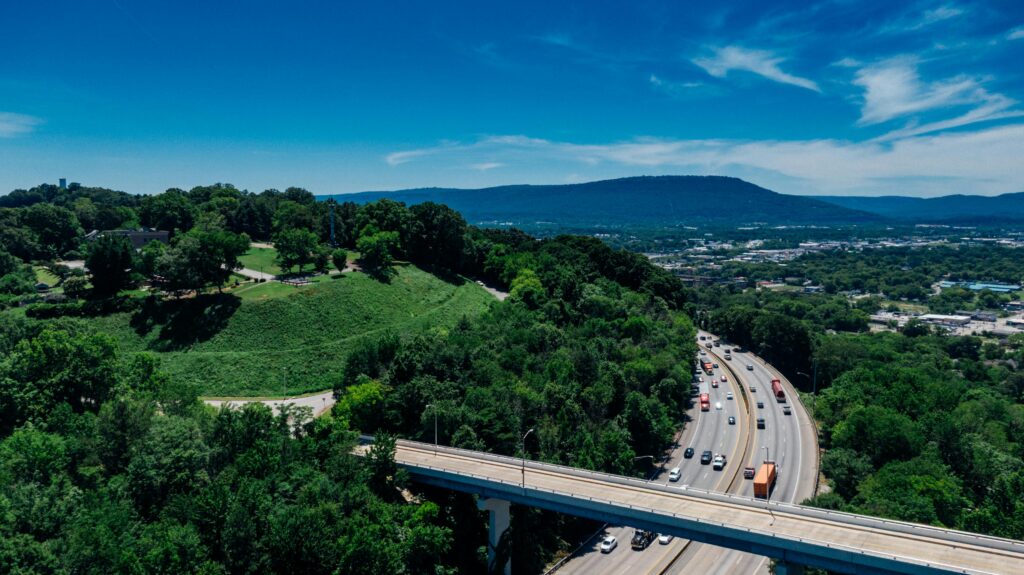
What followed was rare for a city known more for its bureaucracy than responsiveness: officials listened. The Via Verde project was fast-tracked for approval. What began as a digital sketch became a sanctioned urban greening initiative, with plans to convert 1,000 columns along a 27-kilometer stretch of highway into vertical gardens.
Financing the project required compromise. A public survey offered three funding options: government taxes, citizen donations, or corporate sponsorship. Nearly half supported private investment, even if it meant that every tenth pillar would carry digital advertisements. Though controversial, this model secured the 300 million pesos needed to bring the vision to life without burdening the city’s strained public budget.
But Via Verde wasn’t just about plants. It was about participation. From design to funding, the public played a defining role. It marked a rare moment when civic imagination outpaced political inertia. As Monasterio noted, “We need their money,” referring to corporate sponsors, “but we also need public will.”
What the Vertical Gardens Actually Do
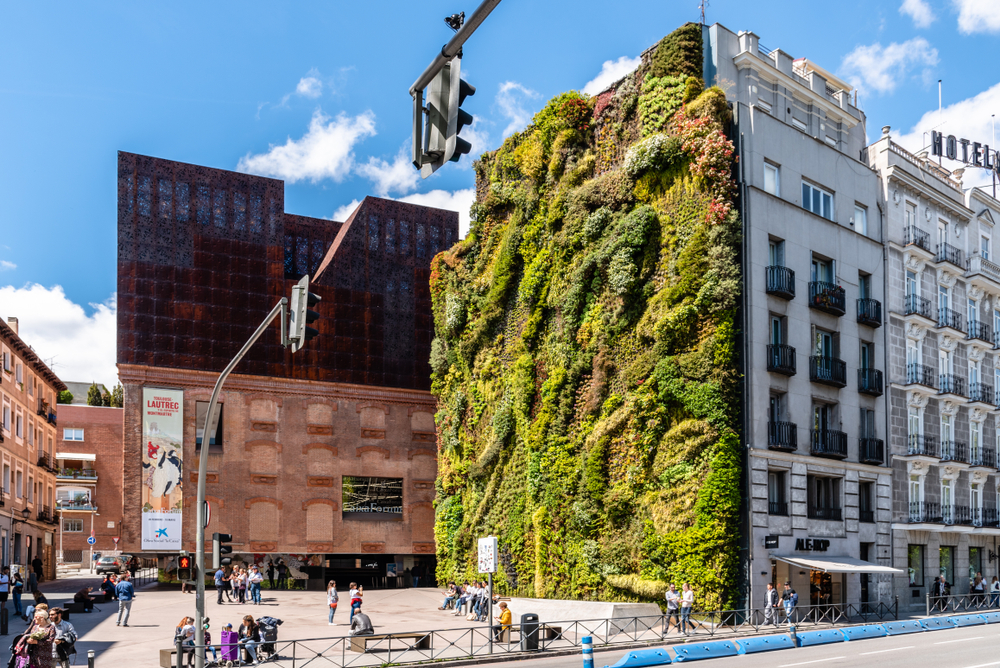
Each Via Verde pillar stands as a vertical contradiction life growing from stone, beauty rising from exhaust. But behind the lush facade is a carefully engineered system designed to do more than catch the eye. These are not just decorations; they are breathing walls built with purpose.
The structure of each garden begins with modular panels made from recycled plastic and aluminum, shaped into felt pouches. These pouches, stitched by incarcerated individuals as part of a social reintegration initiative, hold a curated selection of low-maintenance plants primarily succulents and climbers that can endure Mexico City’s harsh urban conditions.
To keep these vertical ecosystems alive without adding pressure to the city’s strained water supply, the gardens rely on a closed-loop hydroponic system. Rainwater and non-potable runoff from the city’s drains are collected, filtered, and recirculated to irrigate the plants. Sensors embedded in the pillars monitor moisture, temperature, and plant health, allowing remote maintenance across the expansive 60,000 square meters of greenery.
The environmental promises are bold. Project estimates suggest that annually, these vertical gardens can capture nearly 90 tons of carbon dioxide, produce 65 tons of oxygen, and filter over 32,000 tons of harmful gases. They are also expected to trap more than six tons of dust and process roughly 12.5 tons of heavy metals substances that would otherwise circulate in the air residents breathe.
Beyond pollution control, there are quieter benefits. Studies have long shown that urban greenery, even in limited exposure, can reduce stress, calm the nervous system, and improve emotional well-being. Commuters report that traveling along the greened corridor feels different less abrasive, more humane. “They smile more,” said Monasterio, reflecting on public feedback.
Crucially, the project is also a platform for social impact. Via Verde has created employment for gardeners, installers, and technicians many from underserved communities. Training is simplified into short videos and practical instruction, enabling individuals without formal education or horticultural experience to earn a dignified income.
The gardens are not perfect. Some plants die, systems require upkeep, and not every goal is met. But with over 8 million plants installed and a high survival rate, Via Verde has shown that urban greening, when combined with social purpose and smart design, can be more than symbolic. It can be living proof of what’s possible when innovation is rooted in both the environment and the people who inhabit it.
A Look at the Criticism

For all its beauty and acclaim, Via Verde has not escaped scrutiny. Critics argue that beneath the green veneer lies a set of uncomfortable truths about effectiveness, priorities, and what truly constitutes environmental progress in a city grappling with deep-rooted structural challenges.
The most persistent concern is about impact. While Via Verde’s promotional materials cite impressive statistics tons of carbon dioxide captured, oxygen generated, and pollutants filtered experts in urban ecology and public health have questioned the scientific grounding of these claims. Phytoremediation, the process by which plants purify air, is complex. Only certain species have the capacity to meaningfully reduce airborne toxins, and the succulents and climbers used in Via Verde were selected more for durability than pollutant-absorbing power.
Environmental health advocates point out that the city’s pollution problem is overwhelmingly driven by vehicular emissions. “Almost all of our local pollution and mobility problems can be attributed to the excessive use of private cars,” said Sergio Andrade-Ochoa of the NGO Liga Peatonal. Vertical gardens, while visually soothing, do little to challenge the underlying car-centric model. In fact, some argue that they make driving through the city more pleasant softening the consequences of overdependence on cars rather than redirecting behavior.
There’s also the matter of cost-effectiveness. A striking comparison went viral in local media: the funds used to build a single Via Verde column could plant up to 300 traditional trees. In a city with one of the lowest green space-to-resident ratios in the world under 3 square meters per person compared to the World Health Organization’s recommended 9 this has sparked debate about whether the project represents the best use of limited resources.
Then comes the question of accessibility. Unlike parks or public plazas, these gardens are not spaces people can enter, rest in, or interact with. They are visual, not communal. For some urban planners, this feels like a missed opportunity. The transformation is seen, not felt.
Finally, the project’s financial model, dependent in part on corporate sponsorships, raises ethical questions. With every tenth pillar used for digital advertising, and with partners including corporations often criticized for environmental practices like Coca-Cola some have accused the project of enabling greenwashing. Even Monasterio has acknowledged the trade-off: “I know I’m cleaning Coca-Cola’s soul,” he said, “but we need their money.”
Lessons from Global Green Roads
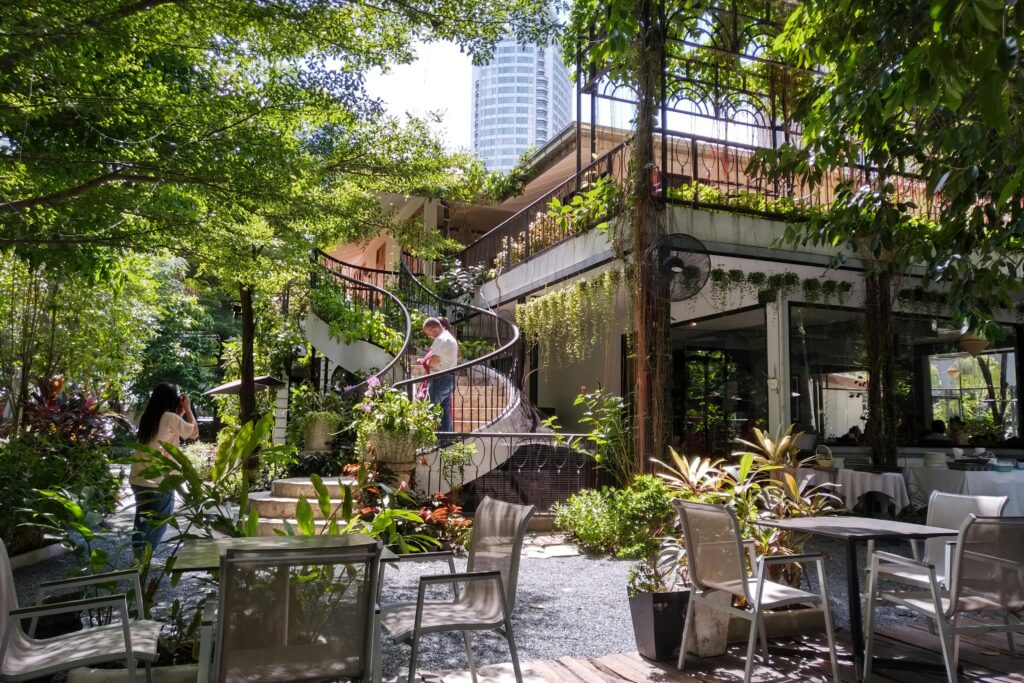
Mexico City’s Via Verde may be rooted in local need and citizen vision, but it is part of a much larger, global movement one that sees highways not just as conduits for traffic, but as platforms for sustainability, public health, and innovation. Around the world, governments, engineers, and communities are rethinking what roads can do, and more importantly, what they should do in the face of climate change, urban crowding, and declining air quality.
In Sweden, sustainability is wired directly into the pavement. The Nordic country has pioneered wireless charging highways, starting with a test stretch in Visby. Embedded coils beneath the asphalt allow electric vehicles to recharge while in motion a direct attack on range anxiety, one of the key barriers to EV adoption. Plans are underway to expand this to a 13-mile corridor between major cities, making Sweden a global leader in electrified transport infrastructure.
South Korea took a different but equally compelling route. In Sejong City, solar panels stretch above a dedicated cycle lane situated between highway lanes. More than 7,500 panels generate energy for 600 homes and public lighting, while simultaneously offering protection to cyclists from sun and rain. It’s a model that merges clean energy, non-motorized transport, and public wellness all within the footprint of an existing road.
The Netherlands, a longtime champion of green design, has transformed portions of its highway system into solar farms. A 400-meter stretch in Uden now powers approximately 60 homes through road-embedded solar panels. Projects like “Rolling Solar” are extending this idea across Belgium and Germany, turning vast, otherwise passive road surfaces into generators of clean electricity.
In Kenya’s Makueni County, sustainability looks different but is no less innovative. Here, roads are engineered to mitigate flooding and support agriculture. Culverts and drainage systems channel stormwater into local farms, while fruit trees planted along roadways reduce dust and improve both air quality and food supply. It’s a low-tech, high-impact solution tailored to local needs.
Meanwhile, in the United States, green highways are still largely in the experimental phase. At Purdue University in Indiana, engineers are testing electromagnetic coils embedded in roads to wirelessly charge electric vehicles, including heavy-duty trucks. Elsewhere, urban planners are exploring green corridors that include permeable pavements, stormwater filtration systems, and multi-use pedestrian and bike lanes.
What unites all of these efforts is a shared principle: infrastructure must evolve. Roads, once seen only as arteries of commerce and car culture, are being reimagined as tools for climate resilience, energy generation, water management, and even mental health. Via Verde may not carry electricity or manage floodwaters, but it shares the same DNA adaptive reuse, creative design, and a vision of infrastructure as something alive, not static.
Why This Movement Matters
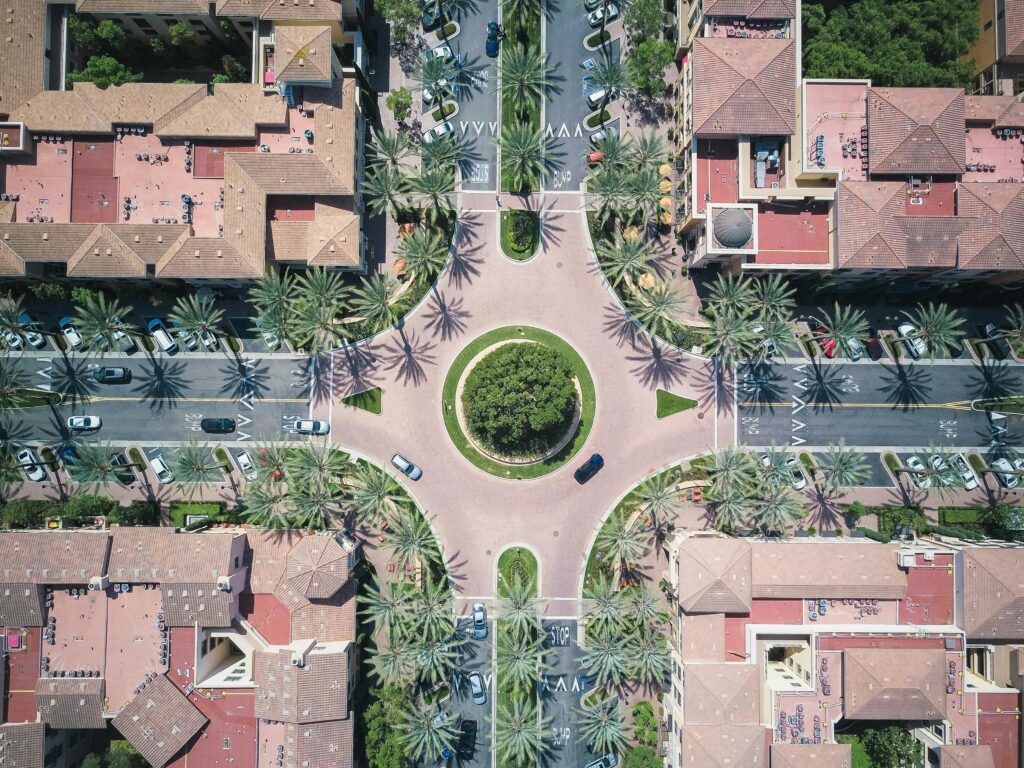
What makes Via Verde resonate isn’t just its greenery it’s the deeper shift it represents. At its core, this project is not about plants. It’s about perspective. It’s about the idea that even the most rigid, grey, and lifeless parts of a city can be reclaimed, reimagined, and renewed.
In a world that often feels stuck locked into outdated systems, smog-choked skylines, and political gridlock Via Verde reminds us that transformation doesn’t always come through sweeping policy or billion-dollar budgets. Sometimes, it comes through a question, a drawing, a petition. It comes through people refusing to accept that things must stay the way they are.
The pillars themselves don’t invite people to sit, play, or gather. They don’t end traffic or solve the city’s air crisis. But they do something else. They provoke a pause. In a city built for speed and survival, they create a moment of visual relief a flash of nature where there was none, a symbol that says: we can do better. And in that brief moment, something shifts.
What began as a beautification effort has grown into a quiet form of protest against inertia. It’s a testament to what happens when citizens lead and institutions follow, when design meets social conscience, and when infrastructure serves not just efficiency but emotion.
Reclaiming the City, One Pillar at a Time
Via Verde may not be a perfect solution but its strength lies in the fact that it doesn’t try to be. It’s not a silver bullet for air pollution, nor a substitute for mass transit reform or deep environmental legislation. What it is, however, is a symbol of what happens when cities and the people who live in them choose action over apathy.
In a place once named the most polluted on Earth, vertical gardens now climb the same structures that once only served traffic. What used to be dead space has become a living statement. That transformation of space, of mood, of belief matters. It reminds us that progress isn’t always about tearing down and starting over. Sometimes it’s about reimagining what already exists.
Mexico City didn’t wait for a miracle. It took a step. Citizens spoke, and the city responded. With recycled materials, reclaimed water, grassroots momentum, and pragmatic compromise, an expressway became a canvas for renewal.
And this is where the story leaves you the reader. What pillars surround you? What neglected structures in your city, your routine, or your thinking could be turned into something that gives life instead of taking it?
Transformation doesn’t always roar. Sometimes, it climbs quietly up the side of a highway column. Sometimes, it starts with a seed.
Loading...

